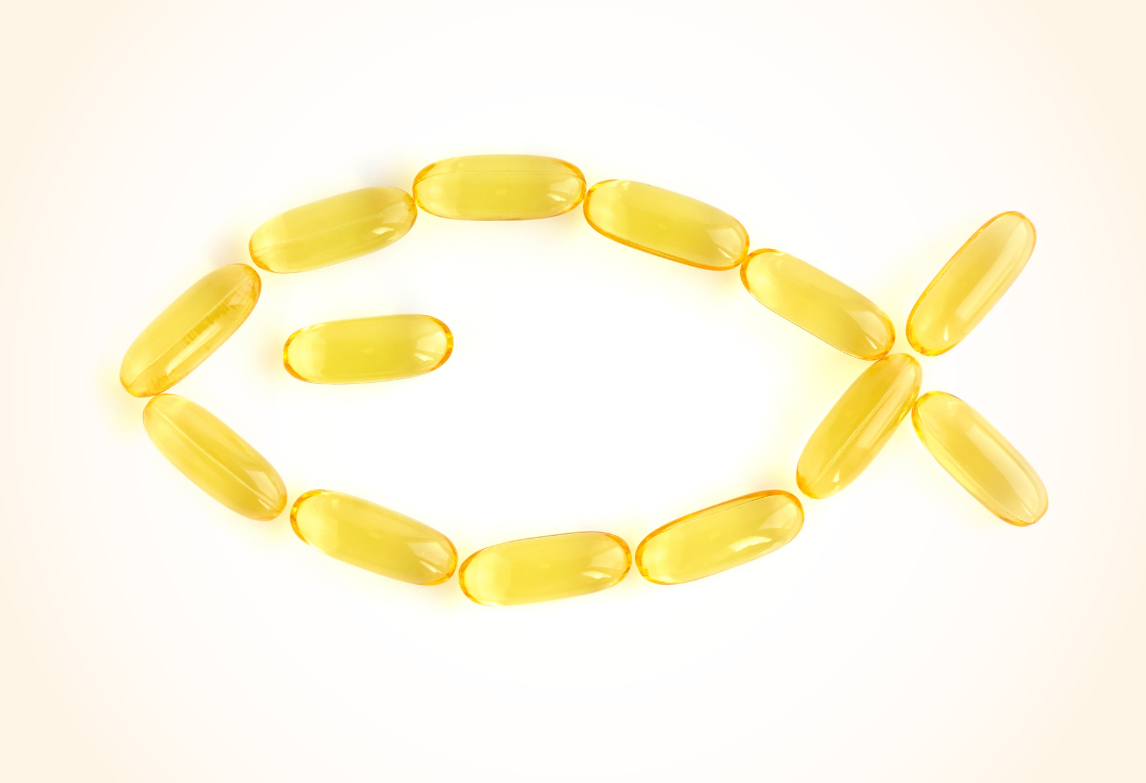- Glands in the eyelids are responsible for producing fatty oils that help lubricate the eye
- Inadequate production of fatty oils makes the tear film thinner – leading to eye dryness and irritation
- Research suggests that omega-3s help support the secretion of fatty oils onto the eye surface
A commonly occurring eye issue that becomes increasingly prevalent with age is Dry Eye, a condition where tears are unable to lubricate the eyes adequately, leading to feelings of extreme eye dryness. While eye dryness may not sound seriously debilitating, those dealing with it know all too well that it can impair vision quality, affect work productivity, and interfere with daily activities.1 Unfortunately, the eye is vulnerable to a multitude of biological and environmental factors that can damage the ocular surface, and slow the eye’s ability to produce quality tear film. As a result, this can lead to symptoms of eye-dryness.2,3
In addition to age, eye dryness becomes increasingly prevalent with the use of digital devices (iPads, laptops, phones, etc.).

Studies report that about 50% of office workers using digital displays experience symptoms of eye dryness.4
Although once seen almost exclusively in older adults, thanks to the increasing use of digital devices amongst children, we are now seeing more and more symptoms of eye dryness in young people.
For example, about 25% of high school students have dry eye symptoms, and even younger, school-aged children who use their smartphones excessively are showing symptoms of eye dryness.5,6
Common complaints associated with eye dryness include: 2,3
- General irritation
- Gritty sensation
- Redness
- Burning
- Stinging
- Blurred vision
- Foreign body sensation (feeling like a dust particle, grain of sand, etc. is caught in the eye)
- Pruritus (an itchy sensation)
- Photophobia (light sensitivity)
- Excessive tear production (watery eyes)
Risk factors for eye-dryness include: 2,3
- Digital screen use (long hours spent using computers, phones, tablets, etc.)
- Low humidity
- High air velocity (air conditioning, furnaces, etc.)
- Wearing contact lenses
- Use of certain medications (e.g., antihistamines, antidepressants, and blood pressure medications)
- Vitamin A deficiency
- Abnormal blood sugar metabolism
- Hormone replacement therapy
- Certain autoimmune conditions
- Reduced androgen levels (mainly low testosterone)
- Irradiation (diagnostic imaging, natural light sources, etc.)
- History of eye surgeries (LASIK, etc.)
In this article, we will discuss the importance of fatty oil production for the eyes and how omega-3s may play an important role in maintaining eye lubrication and visual health.
Fatty oils – Important eye-lubricating substance
Fatty oils, water, proteins, enzymes, salts, and mucin (a gel-like substance that has cell-protective properties) are the substances that make up tear film.7 When tear film chemistry changes, it may lead to eye dryness.8 For instance, one of the most common problems leading to eye dryness is the inadequate production of fatty oils by the meibomian glands.9 The meibomian glands, located in the upper and lower eyelids, produce lipid-rich secretions known as meibum. In the blink of an eye (quite literally, as blinking stimulates the meibomian glands), meibum is released onto the ocular surface, where it blends with water and mucin to make up tear film.10
By lubricating the eye, meibum helps protect it against:
- Tear Evaporation
- Ocular Friction
- Ocular Inflammation
- Ocular Surface Damage
Inadequate production of high-quality meibum makes the tear film thinner and less able to properly cover the ocular surface. Ultimately, having a thinner tear film layer leads to eye dryness and loss of vision quality11,12 Fortunately, there is evidence to suggest that omega-3s help support the production of high-quality meibum and may help alleviate symptoms of eye dryness.13,14
Can Omega-3s support meibum gland secretion?
Studies show that individuals with a high dietary intake of omega-3 fatty acids and moderate intake of omega-6 fatty acids (which can be pro-inflammatory when consumed in excess) are less likely to have trouble with the meibomian glands of the eye or experience eye dryness.15,16 For this reason, researchers have attempted to determine if supplementing with omega-3s can influence meibomian gland function, meibum secretions, and eye dryness.17
In one such trial, participants with signs of moderate meibomian gland dysfunction were examined over the course of 12 weeks. All of the study participants practiced the standard treatment (i.e., daily application of warm compresses, lid massages, and artificial teardrops), while half of the participants also received 1.2 grams per day of omega-3 supplements.18 At the end of the trial, the participants who received the omega-3s experienced significant improvements in markers of eye dryness, including increased meibum production, enhanced meibum quality, higher tear film stability, healthier ocular surface quality, and better contrast sensitivity relative to participants who received only the standard treatment.

In another trial evaluating the effects of omega-3s on meibomian gland problems, eyelid irritation, and eye dryness, participants took a supplement containing approximately three grams of omega-3s per day.19 After supplementing with omega-3s for a year, participants experienced significant improvements in tear film stability and eye dryness. Interestingly, further analysis also showed that participants with healthy meibum samples had higher blood levels of omega-3s, a higher omega-3 to omega-6 ratio, and reduced stenosis of meibomian glands.
The findings from this trial suggest that a higher omega-3 status may be linked to healthier meibomian glands, greater amounts of meibum secretions, and well-lubricated eyes. Further investigation with randomised clinical trials could lend further support to the relationship between omega-3s and eye health.
Do Omega-3s help with eye dryness?
Although a number of well-conducted research studies have shown that the use of omega-3 supplements can help with symptoms of eye dryness, more research is needed to identify the specific omega-3 mechanisms in play, and whether certain populations are more likely to benefit.14,20
For example, a recent meta-analysis of studies from around the world showed that omega-3 studies conducted in India consistently reported greater improvements in eye dryness, as compared to omega-3 studies conducted in other countries.14 A likely explanation for this has to do with diet. Vegetarian diets are more commonly practiced in India, which may result in lower dietary intake of omega-3s, and thus, lower blood levels of omega-3s. As a result of lower omega-3 status, Indian populations may respond better to omega-3 supplements than populations who typically consume more EPA and DHA from marine sources, and thus are not as omega-3 deficient.
Not all studies have shown that omega-3s help eye dryness. For instance, the Dry Eye Assessment and Management Study Research Group (DREAM) recently conducted a trial that analysed the effects of omega-3 supplements on eye dryness but allowed participants to continue taking eye-dryness targeted prescriptions.21
Not surprisingly, the results of the DREAM trial showed that taking omega-3 supplements proved to be no better than a placebo at relieving eye dryness complaints.
Unfortunately, participants were allowed to continue using eye-dryness targeted prescriptions makes it difficult to truly evaluate the effects of omega-3 supplements, as the prescription medications may have masked the benefits of omega-3s and led to significant improvements in the group receiving the placebo—thereby neutralising a treatment effect between groups.

Another consideration when reviewing omega-3 and eye health literature is that research problems can arise due to the studies analysed being vastly different from one another – an issue known in research as a high level of heterogeneity.
Participants included in many of these studies have had various levels of eye dryness severity, different underlying medical conditions, or have been affected by different risk factors associated with eye dryness.10,16
Moreover, the specific omega-3 formulas and dosages between trials have varied tremendously, further limiting our ability to evaluate the collective research evidence as a whole.
Adin Smith, MS is a Science Researcher and Writer for Nordic Naturals. He holds a Masters Degree in Nutrition, and believes that many health conditions are the result of suboptimal nutrient status. For this reason, Adin is committed to informing others about the latest research in nutrition, lifestyle modification, and dietary supplements.
Glossary & References
Glossary
- Contrast sensitivity: The ability to distinguish between smaller increments of light.
- Fatty Oils: Various types of fatty acids, cholesterol molecules, and waxes produced by the meibomian glands.
- Meibomian gland: Glands located in the upper and lower eyelids responsible for producing lipid-rich secretions, known as meibum.
- Meibum: An oily substance that’s responsible for maintaining proper eye lubrication, hydration, and protecting the surface of the eye against pathogens, dust particles, or other foreign substances.
- Mucin: A gel-like substance which has cell protective properties.
- Stenosis: The abnormal narrowing of an important passage (i.e., spinal canal, blood vessel or other tubular structures).
- Tear film stability: Several methods used to evaluate tear film quality.
References
- Farrand KF, et al. Am J Ophthalmol. 2017. 182: p. 90-98.
- Messmer EM. Dtsch Arztebl Int. 2015, 112(5): p. 71–82.
- Craig JP, et al. Ocul Surf. 2017. 15(3): p. 276-283.
- Courtin R, et al. BMJ Open. 2016 6(1):e009675.
- Zhang Y, et al. Ophthalmic Epidemiol. 2012. 19(4): p. 226-30.
- Moon JH, et al. J Pediatr Ophthalmol Strabismus. 2014. 51(2): p. 87-92.
- Green-Church KB, et al. Invest Ophthalmol Vis Sci. 2011. 52(4): p. 1979–1993.
- Baudouin C, et al. Br J Ophthalmol. 2016. 100(3): p. 300–306.
- McCulley JP, Shine WE. Ocul Surf. 2003 Jul. 1(3): p. 97-106.
- Butovich IA. Prog Retin Eye Res. 2009. 28(6): p. 483–498.
- Bron AJ, et al. Exp Eye Res. 2004 Mar. 78(3): p. 347-60.
- Knop E, et al. Invest Ophthalmol Vis Sci. 2011. 52(4): p. 1938–1978.
- Liu A, Ji J. Med Sci Monit. 2014. 20: p. 1583-9.
- Giannaccare G, et al. Cornea. 2019. 38(5): p. 565-573.
- Miljanović B, et al. Am J Clin Nutr. 2005. 82(4): p. 887–893.
- Ziemanski JF, et al. Am J Ophthalmol. 2018. 189: p. 29–40.
- Roncone M, et al. Cont Lens Anterior Eye. 2010. 33(2): p. 49-54.
- Malhotra C, et al. Cornea. 2015. 34(6): p. 637-43.
- Macsai MS. Trans Am Ophthalmol Soc. 2008. 106: p. 336–356.
- Hom MM, et al. Optom Vis Sci. 2015. 92(9): p. 948-56.
- Asbell PA, et al. N Engl J Med. 2018. 378(18): p. 1681–1690.
- American Academy of Ophthalmology Cornea/External Disease Panel. San Francisco: Academy of Ophthalmology, 2013.







Leave a Reply
Want to join the discussion?Feel free to contribute!